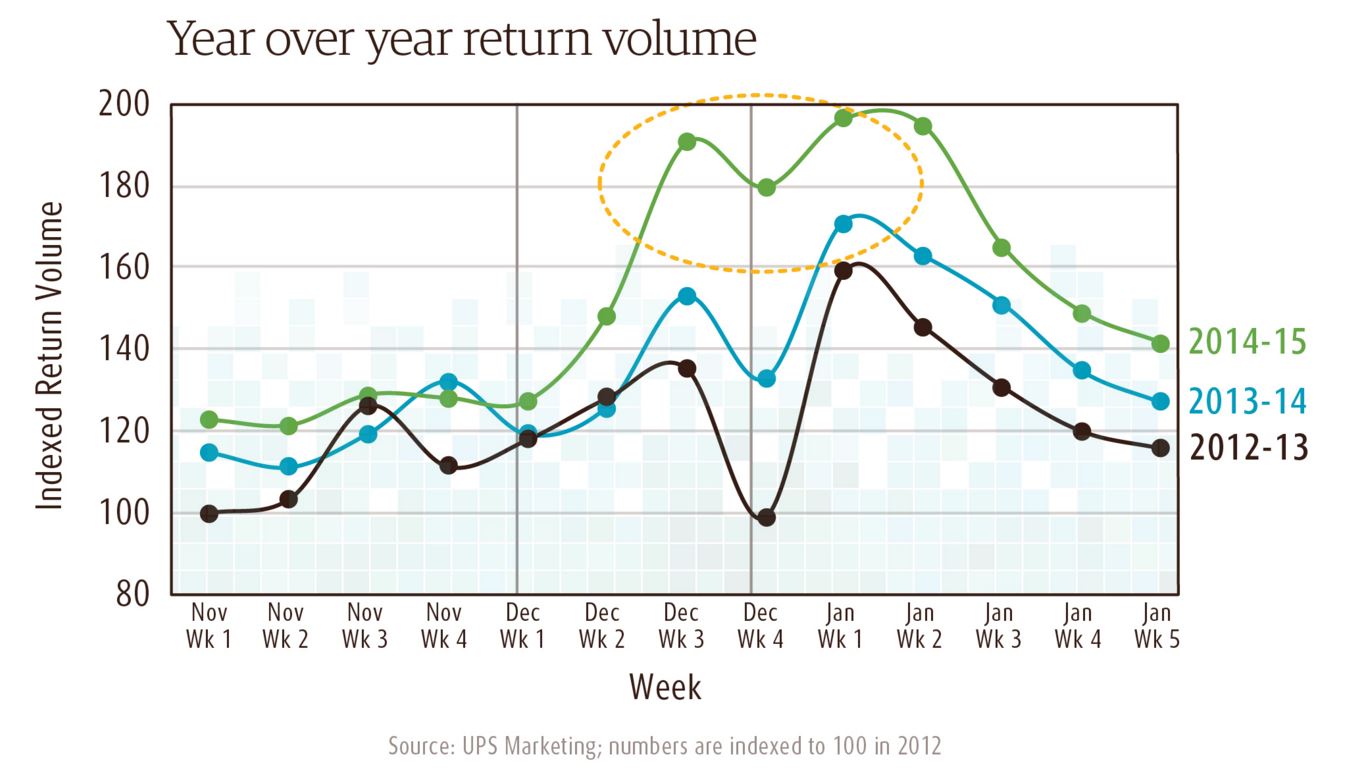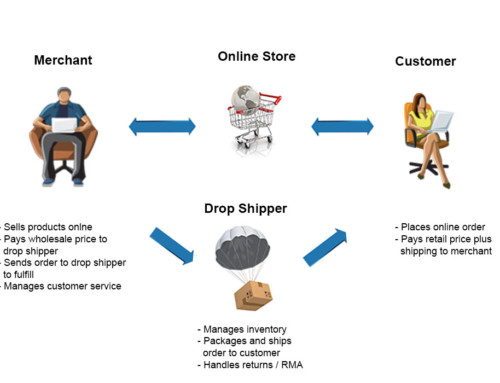
“National Returns Day” is expected to bring in 500,000 more packages this year, reaching 5 million total returns, according to UPS.
Not only are return rates increasing, but UPS also found consumers are returning items earlier, and making room for two peaks. The first started in mid December and the second goes throughout early January.

Since returns are at an all time high, how can you make sure to maximize your profits, while getting your return items back as quickly as possible?
Managing Returns With Ease
McKinsey & Company feels the future of online retail “is essential for stores to digitize in order to meet the increased customer expectations now a reality in an always-on, whatever-you-want world. More than 60 percent of Americans have a smartphone and 80 percent of these consumers are “smartphone shoppers” – they use their phones to help them shop while in a store, most often to research product reviews, specifications and compare prices.”
If you’re in the business of taking orders online, or managing multichannel sales, at some point, a customer is going to want or need to return a product or cancel an order they’ve placed altogether. Even if you described and listed the item accurately on your website, or another sales channel such as Amazon, the buyer may simply no longer want it. Maybe it arrived broken, didn’t fit, didn’t work as expected or simply wasn’t what they had in mind.
A positive and efficient return experience will increase customer satisfaction, contribute to positive eCommerce product reviews and generate repeat sales, whereas a negative, cumbersome experience can drive a customer elsewhere. With an efficient return process, you can minimize the inevitable cost of accepting merchandise returns and make room to offer free product returns as well.
Breaking Down Return Rates

Return rates are often higher for online retailers than brick-and-mortar stores, due in part to a customer’s inability to physically examine or try on a product. They often buy a product, try it on or examine it at home, and then rely on the merchant’s return policy to return it or exchange it for a product that is better suited to their needs.
If you’re an eCommerce merchant who is looking to generate repeat customers, you need to have a friendly return policy supported by a streamlined back office operation. Consider looking into a free product returns offer to drive in sales.
When products are returned or exchanged, there is critical information you need to know. What are the reasons for a return, whether a refund is involved, the condition of the item when returned, and the amount of inventory of returned items are all very important to keep track of.
Online order management system benefits include giving you the option to customize the return process to your business. Depending upon your return policy, you should have the option to refund the item price but not refund the shipping costs.
Product returns for your eCommerce business work through an automated system that is fairly straight forward. You would be able to create a return at any time after the order has at least one shipment with a status of ‘Completed’. The system would ‘know’ which items are included on the order, the price your customer paid and the original tax and shipping amounts.
As you list the items your customer is returning, the system would track the quantity and cost of the goods returned for you. Depending upon your return policy, whether you are offering free product returns, you may or may not include refunding tax and shipping amounts. The choice should be yours.
How to Get the Maximum Benefit from Your Return Policy
A return merchandise authorization (RMA) is a part of the process of returning a product in order for the customer to receive a refund, or repair according to the merchant’s return policy or within a product’s warranty period.
The issuance of an RMA is a key step in the reverse logistics process, providing you with a final opportunity to address the customer’s issue with the product before it is returned. As returns are costly for you and inconvenient for the customer, any return that can be prevented benefits both parties.

Using the return functionality in an order management system allows you to easily and accurately track the returns and exchanges of merchandise. The buyer of the product (the customer) must contact the retailer to obtain authorization to return the product. The resulting RMA number must be displayed on or included in the returned product’s packaging. No returns are accepted with this RMA number.
The solution should allow you to select the receiving warehouse, if applicable, and process the returned items. You would be able to issue your own manually issued RMA#, refund amount, shipping cost and tax.
If you choose drop shipping as a method of fulfilling orders, it’s easy to get your eCommerce store up and running fairly inexpensively. You also eliminate the other hassles associated with stocking inventory – managing or paying for a warehouse, tracking inventory for accounting purposes, handling returns and inbound shipments, continually ordering product and managing stock levels and more.
If you choose to use Amazon’s fulfillment service, find out how using manage inventory with Amazon works and the pros of using Amazon to manage inventory. Be sure to learn more about drop shipping for eCommerce by checking off the pros and cons before delving in head first.
A Foolproof Way to Maintain Inventory Control with Returns
Managing product returns for your eCommerce business helps you maintain inventory counts and ensure that product locations are kept up to date. Items must be returned to stock as soon as they are received so that they can be re-stocked and re-sold as quickly as possible.
When crediting money back to the customer, the transfer must be quick and accurate. Tracking which products may be subject to a high rate of returns is also important, so that you can quickly identify any problems that may exist with the lot or the supplier.
Online inventory management helps you more quickly adapt to inventory fluctuations, keeping each channel running smoothly. Excessive inventory ties up cash that you could re-invest into the business to help you drive additional revenue.
At the same time, not having enough inventory on hand results in backorders, cancellations, negative social buzz and, potentially, lost customers. It’s a balancing act and an issue every company faces.
Are missing out on the essential functionality when managing your orders for product returns? Request a demo of M.O.M. today!
An updated version of this blog can be found on Many Happy Holiday Returns: How Not to Alienate Customers This Year.



